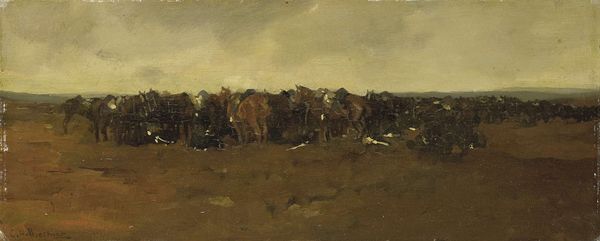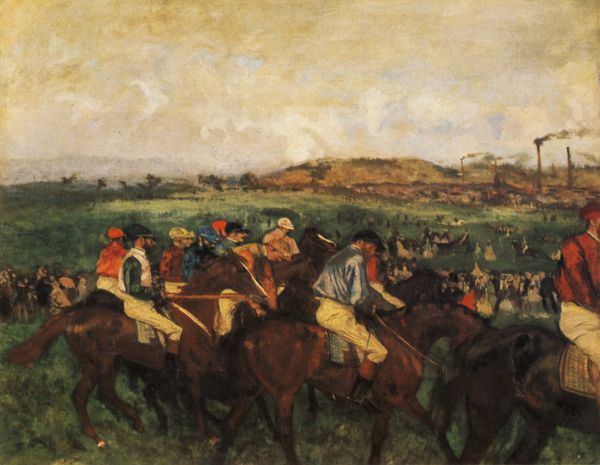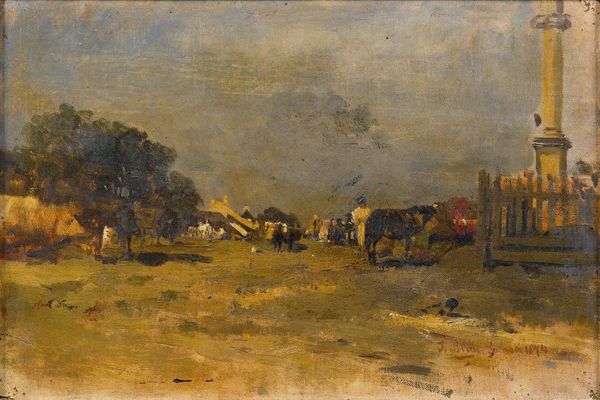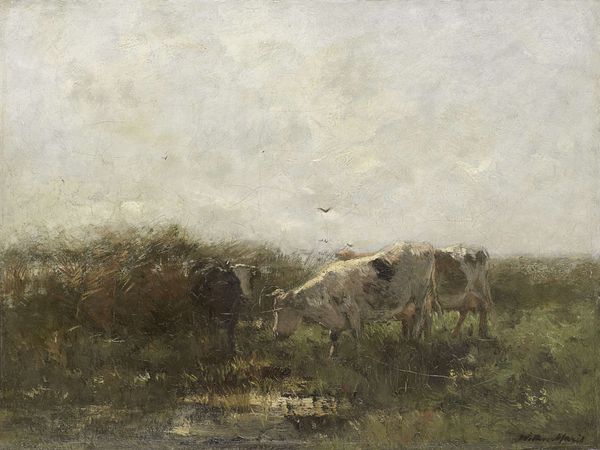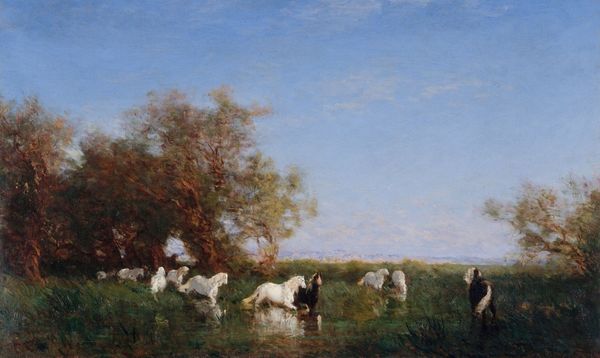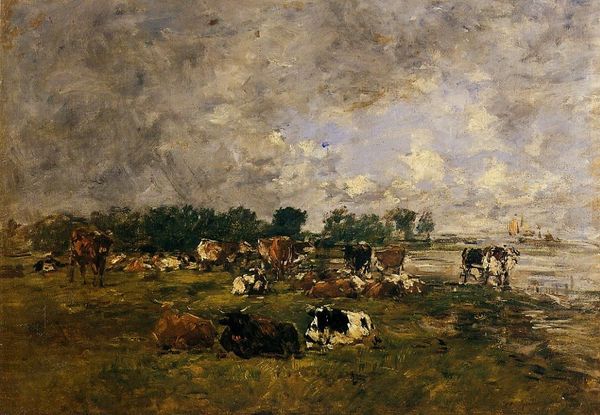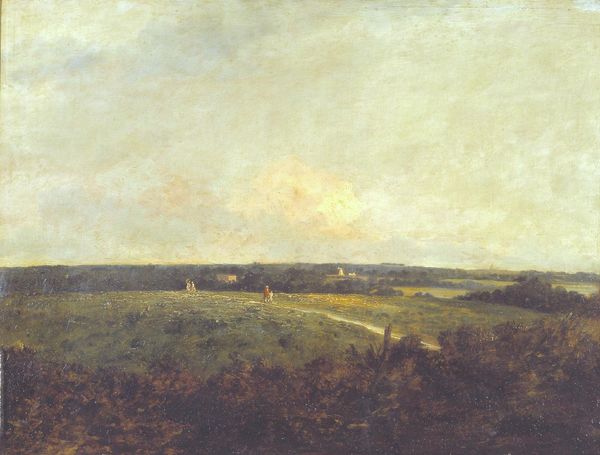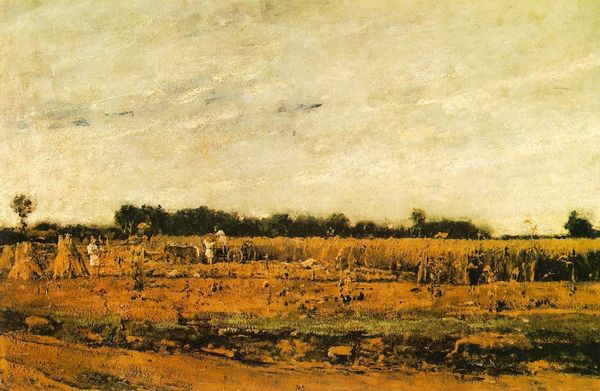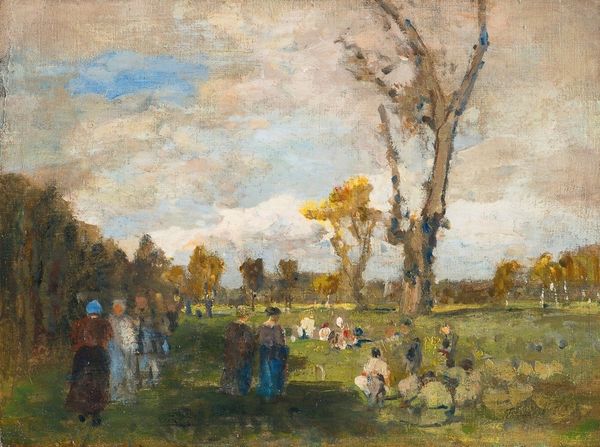
plein-air, oil-paint
#
impressionism
#
plein-air
#
oil-paint
#
landscape
#
impressionist landscape
#
figuration
#
oil painting
#
horse
#
cityscape
#
genre-painting
Copyright: Public domain
Editor: This is Degas' "Before the Race," painted in 1872, using oil paint. It feels quite melancholic to me, perhaps because of the muted palette. How do you interpret this work? Curator: Let's consider what's *in* the painting, and what made it possible. Degas captured a specific moment: a leisure activity made possible by industrial capitalism. Note the smoke stacks in the background—these are crucial. They signal the encroaching industrialization that supported the very wealthy patrons who consumed art like this. Editor: So you're saying the painting is about more than just horses and riders? Curator: Exactly. It’s about the systems of labor and wealth that enable this scene. The materials themselves—oil paint, canvas—were products of industrial processes, commodities circulating within a capitalist economy. How does Degas use these materials? Do you notice anything about the application of paint? Editor: It's kind of rough, almost unfinished in places. It doesn't feel like a polished, idealized depiction of leisure. Curator: Precisely. This looser style can be viewed as a challenge to traditional academic painting, perhaps even reflecting a changing relationship to production itself. The fleeting moment captured challenges established hierarchies, both in art and society. It raises questions about the representation of leisure and labor. Editor: That’s a really interesting way to look at it. I was so focused on the figures that I missed the industrial backdrop. Now I see how crucial it is to understanding the painting's context. Curator: It changes the whole reading, doesn't it? Considering the conditions of its making and reception reveals so much more about the work's cultural significance.
Comments
No comments
Be the first to comment and join the conversation on the ultimate creative platform.
